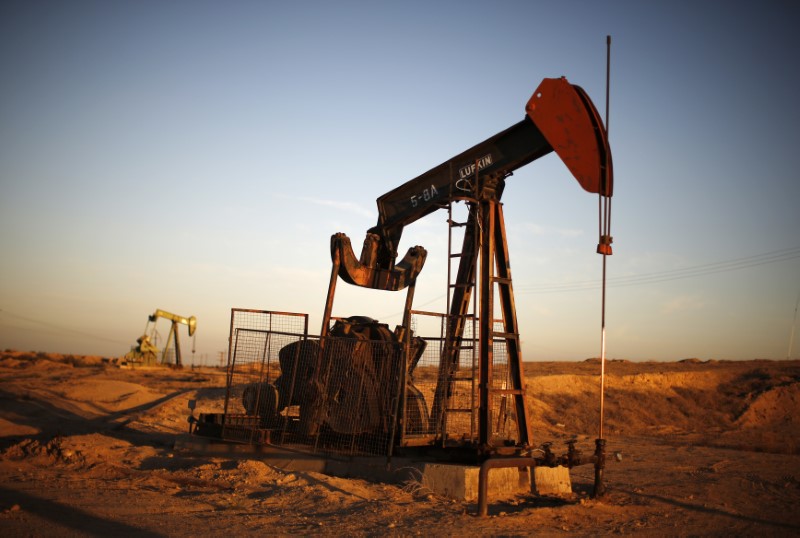By Karolin Schaps
LONDON (Reuters) - Oil prices fell on Monday as news of another increase in U.S. drilling activity spread concern over rising oil output just as many of the world's oil producers are trying to comply with a deal to pump less in an attempt to prop up prices.
The number of active U.S. oil rigs rose to the highest since November 2015 last week, according to Baker Hughes data, showing that drillers are taking advantage of oil prices above $50 a barrel.
Global benchmark Brent crude oil prices (LCOc1) were down 25 cents at $55.26 a barrel at 1010 GMT, while U.S. crude futures (CLc1) slipped 8 cents to $53.09.
"Oil prices are down because of the rise in the U.S. rig count," said Tamas Varga, analyst at PVM Oil Associates in London.
He also added that Petro-Logistics' report that OPEC members had cut production by 900,000 barrels per day (bpd) in January was "not very encouraging" because it implied that only 75 percent of the OPEC production cut target was being met.
The Organization of the Petroleum Exporting Countries and other producers including Russia agreed to cut output by almost 1.8 million barrels per day (bpd) in the first half of 2017 to relieve a two-year supply overhang.
Oil prices have remained above $50 a barrel since producers agreed the deal in December, incentivising drillers in low-cost U.S. shale producing regions to ramp up activity.
"In our view the strong rise in U.S. shale oil rigs is a good thing because it will be needed over the next three years as non-OPEC, non-U.S. crude production continues to be hurt by the deep capex cuts both past and present in that segment," said Bjarne Schieldrop, chief commodities analyst at SEB Markets in Oslo.

He estimates the U.S. rig count will continue rising at a rate of seven rigs per week over the first half of the year.